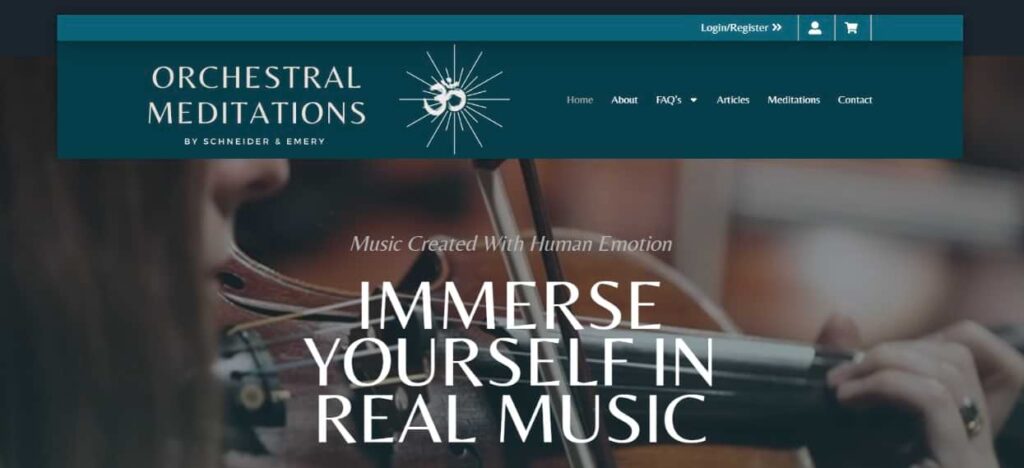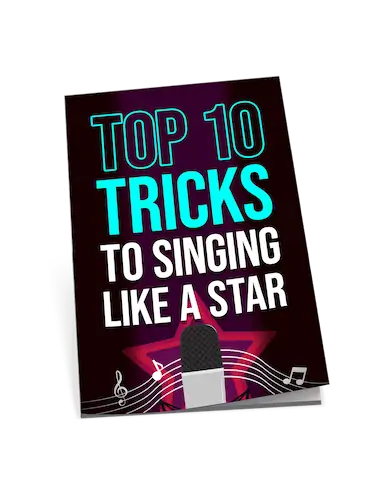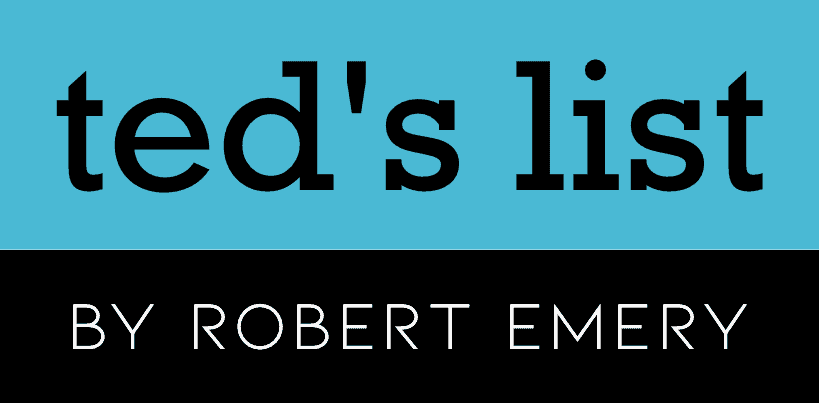Classical music has charmed listeners for centuries, and it still holds its magic today. People often find peace and relaxation in its melodies. But here’s a question you might not have thought about: can classical tunes help with meditation and mental workouts? Definitely, yes.
Classical music and meditation have a lot in common. Both are relaxing and calming, and both can help reduce stress and anxiety. Many people find that listening to classical music while meditating can enhance their meditation experience. Classical music’s slow, calming rhythms can help the mind relax and focus, making it easier to achieve a meditative state.
Key Takeaways
Classical music can be used for meditation to enhance the experience.
Classical music’s slow, calming rhythms can help the mind relax and focus, making it easier to achieve a meditative state.
Choosing the right classical music for meditation and following some tips can make the experience more effective.
Classical Music and Meditation

Benefits of Using Classical Music for Meditation
Classical music has been used for centuries to enhance meditation practices. It has been found that listening to music can have numerous benefits, such as promoting relaxation, reducing stress, improving focus, and increasing overall well-being. When combined with meditation, classical music’s soothing tones and rhythms can help create a deeper and more profound meditative experience.
One of the main benefits of using classical music for meditation is its ability to promote relaxation. Listening to calming and soothing instrumental music to practice meditation can help lower the heart rate, reduce muscle tension, eliminate stress, and calm the mind. This can help create a more comfortable and peaceful environment for meditation practice.
Another benefit of using classical music for meditation is its ability to improve focus. The repetitive and soothing nature of classical music mantra meditation can help the mind stay focused on the present moment, making it easier to let go of distracting thoughts and emotions.
How Classical Music Can Help with Meditation
Classical music can help with meditation in a variety of ways. One of the most effective ways to meditate with music is by creating a calming and relaxing environment for meditation practice. This can be achieved by creating a playlist of soothing classical music, such as piano pieces, flute, or harp music, and playing it softly in the background during meditation practice.
Another way classical music can help with meditation is by using relaxing music, promoting a deep state of inner peace and stillness. Classical music’s slow and calming tones can help to mindfully create a sense of serenity, quiet place and tranquillity, which can help the mind enter a deep meditative state.
It is important to note that not all classical music is suitable for meditation. When choosing music for any type of meditation, it is important to select instrumental pieces that are calming, slow, and soothing. Avoid music with lyrics or upbeat tempos, as they can distract and disrupt the meditative state.
Overall, classical music can be a powerful tool for enhancing meditation practice. It can help promote relaxation, make mindfulness meditation improve focus, and create a more profound and meditative daily practice and experience.
Whether you are a beginner to meditation or an experienced practitioner, incorporating classical music into your meditation practice can be a pleasurable and beneficial experience.
The Connection Between Classical Music and Meditation
Historical Use of Classical Music in Meditation
Classical music has been used for centuries as a tool for meditation. In ancient times, it was believed that certain melodies and rhythms could help to induce a meditative and relaxed state. This belief continues today, with many people using classical music to enhance their meditation practice.
One of the most famous examples of classical music used for meditation is the use of Gregorian Chants in monasteries. These chants were believed to help monks enter into a state of deep meditation and contemplation.
How Classical Music Affects the Brain During Meditation
Classical music has been shown to affect the brain during meditation profoundly. Studies have found that listening to classical music while meditating can help reduce stress and anxiety, lower blood pressure, and improve overall mood.
One reason for this is that classical music often has a slow, steady tempo, which can help calm the mind and induce deep relaxation. Additionally, classical music often features complex melodies and harmonies, which can help to stimulate the mind and keep it engaged during meditation.
Another way classical music can affect the brain during meditation is through its repetition. Many classical pieces feature repetitive patterns and motifs, which can help to focus the mind and create a sense of rhythm and flow.
Overall, classical music can be a powerful tool for meditation. Whether you are a seasoned meditator or just starting the whole meditative practice process, incorporating classical music into your mindfulness practice can help to deepen your experience and enhance your overall well-being.
Choosing the Right Classical Music for Meditation
When choosing classical music for meditation, there are a few factors to consider. Not all classical music is created equal; some pieces may be more conducive to relaxation and reflection than others. In this section, we’ll explore some key factors to consider when choosing classical music for meditation and some popular pieces to add to your playlist.
Factors to Consider When Choosing Classical Music for Meditation
Instrumentation: The type of instrumentation used in a classical music piece can significantly impact its suitability for meditation. Instrumental music, such as piano, flute, and harp, is often preferred over vocal music, which can be distracting. Ambient music, which is characterized by its atmospheric and repetitive nature sounds, can also be an excellent choice for meditation.
Tempo: The tempo, or speed, of a classical music piece, can also affect its suitability for meditation. Slow and steady pieces like Adagio and Andante are often preferred over faster, more energetic pieces. However, some may find that alternating between fast and slow pieces can help induce relaxation.
Composer: Some classical music composers are known for their often meditative music and reflective pieces. Claude Debussy, John Tavener, and Erik Satie are just a few examples of composers whose music is often used for meditation. Estonian composer and performer Arvo Pärt is known for his minimalist and contemplative pieces, with compositions such as “Spiegel im Spiegel.”
Popular Classical Music Pieces for Meditation
“Spiegel im Spiegel” by Arvo Pärt: This minimalist piano piece is characterized by its slow and repetitive nature, making it an excellent choice for meditation.
Gregorian Chants: Gregorian chants, characterized by their monophonic sound texture and Latin lyrics, have been used for centuries as a form of meditation.
“Gymnopédie No. 1” by Erik Satie: This slow and gentle piano piece is lovely music often used for relaxation, silence and reflection in silence.
“The Lamb” by composer John Tavener: This choral piece is known for its serene and contemplative qualities.
We’ve also come across a fantastic new website called Orchestral Meditations. They have used the National Philharmonic Orchestra of Great Britain to record live meditations with orchestral musicians and singers. It’s seriously high-quality music designed with certain healing frequencies in mind. The music is mixed in binaural and was recorded at the amazing Abbey Road Studios in London. Besides the wonderful popular classics written above, you should look at https://orchestralmeditations.com for their superb meditation music.

But remember, when choosing classical music for meditation, it’s important to find the best music and pieces that resonate with you. Experiment with different pieces and playlists to find what works best for you. With the right music, you can create a calming, reflective atmosphere perfect for meditation.
Tips for Using Classical Music in Meditation
Creating a Comfortable Environment for Meditation with Classical Music
When using classical music for meditation, it is important to create a comfortable environment that allows you to relax and focus on the music fully. Find a quiet space where you can sit or lie down comfortably.
Make sure the room is free from distractions and has a comfortable temperature. Try to dim the lights or light candles to create a calming atmosphere.
Choose a comfortable position that allows you to relax and focus on the music. You can sit cross-legged on the floor, lie down on a yoga mat, or sit in a comfortable chair. Whatever position you choose, ensure you are comfortable and can maintain it for the duration of your first guided meditation or session.
Incorporating Classical Music into Your Meditation Practice
To incorporate classical music into your meditation practice, start by choosing a piece of music that resonates with you. You can choose a piece of classical meditation music that is slow and calming or something more upbeat and energizing. You might also consider meditating with music or guided meditations incorporating classical music.
As you begin your meditation, focus on your breath and allow yourself to become fully present in the moment. As the music plays, let it wash over you and allow yourself to become fully immersed in the sound. Try to focus on the music, letting your mind let go of any distractions.

As you continue to listen to the music, you may find that your concentration and awareness deepen, allowing you to enter into a deep meditative state. With practice, you may be able to even can you use classical music for meditations as a tool to help you achieve inner peace and calm.
In conclusion, classical music can be a powerful tool for meditation practice. By creating a comfortable environment and allowing yourself to fully immerse in the sound, and the sensory experience, you can use classical music to deepen your meditation practice and achieve a deeper sense of awareness deeper meditation and inner peace.
Conclusion
Classical music has been used as a tool for meditation for centuries. It is known that listening to music can have a calming effect on the mind and can help reduce stress levels. The studies reviewed in this article suggest that classical music can be an effective tool for meditation, but it is important to choose the right type of music.
Studies have shown that meditative or slow classical music can lower heart rate, blood pressure de-stress, and respiratory rate. It can also improve cognitive function and reduce somatic arousal. However, it is important to note that not all types of classical music are suitable for meditation. Some pieces may be too stimulating or distracting.
Overall, classical music can be a useful tool for meditation, but choosing the right type of music is important. Experimenting with different pieces and finding what kind of meditation music works best for each individual is recommended.
It is also important to use classical music and other meditation techniques, such as deep breathing and visualization.
In conclusion, classical music can be a helpful tool for meditation, but it is not a one-size-fits-all solution. It is important to find the right type of music that works for each individual and use it with other meditation techniques. With the right approach, classical music and mindfulness can be a powerful tools for reducing stress and improving overall well-being.
FAQ's
Yes, classical music can improve meditation by helping to calm the mind, soul and body, reduce stress, and increase focus. Classical music’s soothing and melodic nature can provide a relaxing backdrop for meditation, allowing the mind and soul to become more centered and focused.
Some benefits of using classical music for meditation include increased relaxation, reduced stress and anxiety, improved focus and concentration, and greater inner peace and tranquillity. Classical music can also help to create a more conducive environment for meditation, providing a calming and soothing backdrop that can help to enhance the overall meditation experience.
Classical music has been shown to positively affect the brain during meditation, helping to reduce stress and anxiety, increase relaxation, and improve focus and concentration. Studies have also shown that listening to classical music can help increase the production of certain brain chemicals, including dopamine and serotonin, associated with feelings of happiness and well-being.
Many classical pieces are recommended for meditation and yoga, including works composed by Bach, Beethoven, Mozart, and Chopin composers. Some popular choices include Bach’s “Air on the G String,” Beethoven’s “Moonlight Sonata,” and Mozart’s “Clarinet Concerto.”
Yes, classical music can help with relaxation during meditation by allowing a person to meditate with a calming and soothing backdrop that can help reduce stress and anxiety. Listening to classical music to meditate can also help to relieve stress, slow down the heart rate, lower blood pressure, and reduce muscle tension, all of which can contribute to a greater sense of relaxation and calmness.
Some tips for incorporating classical music into a meditation practice include choosing a piece of music that is calming and soothing, creating a quiet and peaceful environment for your meditation session, and using headphones or speakers to enhance the listening experience. It’s also important to choose a piece of music that resonates with you personally, as this can help to enhance the overall meditation experience.












Having served for many years, finding tranquility has often been challenging post-service. The concept of utilizing classical music as both a tool and companion for meditation is intriguing and offers a promising avenue worth exploring. Therefore, the discussion on how to choose the appropriate classical pieces for individual meditation practices is particularly valuable. However, one wonders if there’s an adaptability aspect of this approach to cater to individuals who might have distinct memories or associations with certain pieces that could counteract the meditative intent?
Definitely, certain frequencies can trigger different emotions and responses. Tailoring a playlist to personal experiences can enhance or detract from the meditation experience.
Eddy’s got a point. Some tunes take me back, not always where I wanna go when meditating. Personalized playlists could be key.
Always knew there was something magical about those old-school classical tracks. They hit different, especially when you’re trying to chill out and find some inner peace. This article nailed it with the connection between classical music and meditation. Props.
Does playing classical music loud help with meditation, or should it be more of a background thing? Got clients asking about incorporating music into their cooldown routines.
So fascinating to think of classical music as not just sound, but as a medium for meditation. I’ve always felt a deep connection to the melodies, like they were speaking beyond words. got to say,
Dave Danford, your piece here beautifully intersects with the world of sound healing – a realm I’m keenly exploring. Wonder if there’s a specific piece you’d think complements introspective practices exceptionally well?